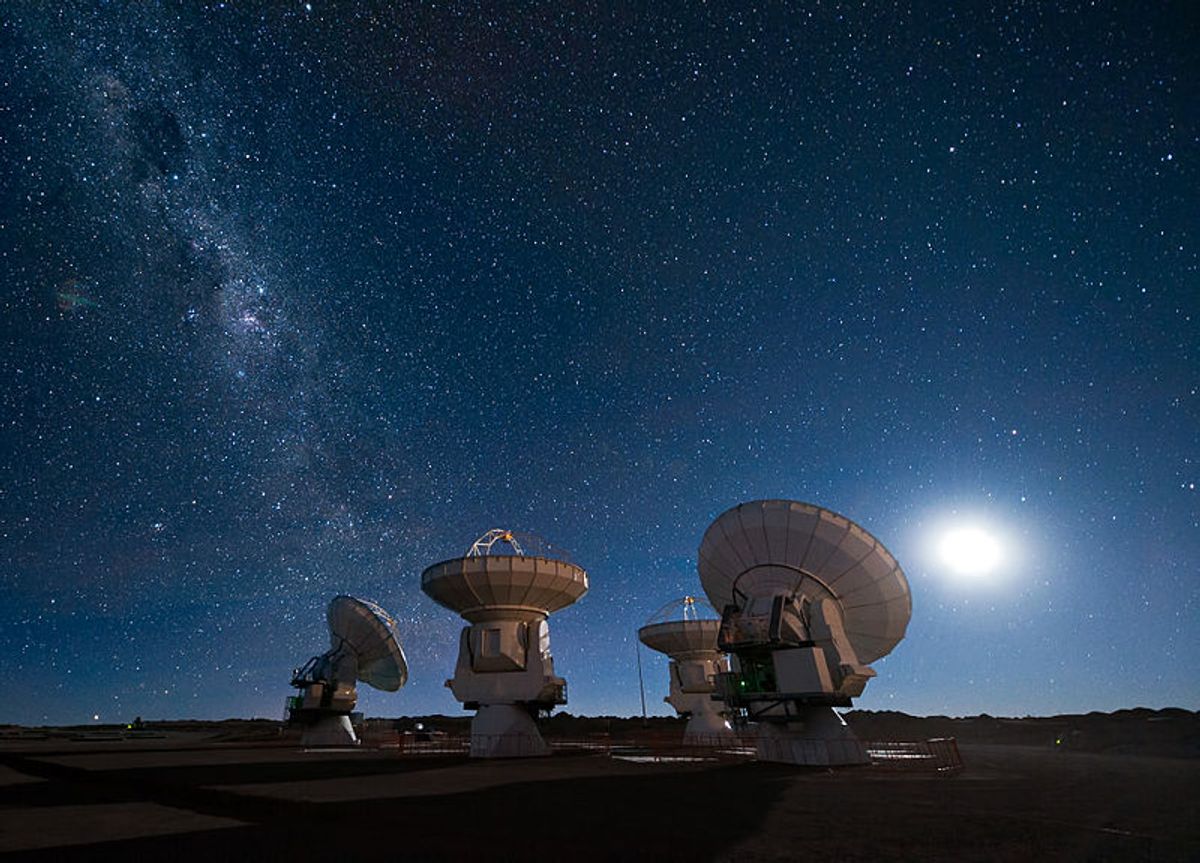On 10 October 2016, astronomers Ermanno Borra and Eric Trottier from Quebec’s Université Laval uploaded an early draft of a paper titled “Discovery of Peculiar Periodic Spectral Modulations in a Small Fraction of Solar-type Stars” to the preprint repository arXiv.org. This paper was ultimately published in the November 2016 issue of the scientific journal Publications of the Astronomical Society of the Pacific, of which Phys.org reported as follows:
The two astronomers used data from the Sloan Digital Sky Survey, and analyzed the spectra of 2.5 million stars. Of all those stars, they found 234 stars that are producing a puzzling signal. That's only a tiny percentage. And, they say, these signals "have exactly the shape of an ETI signal" that was predicted in a previous study by Borra.
Borra’s "prediction," however reasonable, makes for remarkably circular logic. The idea, which he described in a 2012 paper was “highly speculative,” suggested that “technology now available on Earth could be used to send signals that have the required energy to be detected at a target located 1000 light years away.” Simply stated, the prediction was this:
ExtraTerrestrial Intelligence (ETI) could signal its existence to others by sending light pulses with time separations of the order of 10-9 to 10-15 seconds that could be detected in spectra.
So Borra and co-author Trottier searched a database of spectral signals from 2.5 million stars and found 234 that fit the prediction. After arguing that instrumental defects and other obvious explanations couldn’t explain the findings, the team made the suggestion that these findings might confirm Borra’s theory:
Finally, we consider the possibility, predicted in a previous published paper, that the signals are caused by light pulses generated by ETI to makes us aware of their existence. We find that the detected signals have exactly the shape of an ETI signal predicted in the previous publication and are therefore in agreement with this hypothesis.
The story went viral when these conclusions were highlighted in an article in the UK’s Independent, which, in its headline made the claim that “Strange messages coming from the stars are ‘probably’ from aliens, scientists say.” The use of the word “probably” likely comes from an enigmatic note made on the ArXiv website that hosted a pre-publication version of the paper by Borra and Trottier:
“Accepted for publication by PASP: Signals probably from Extraterrestrial Intelligence. Analysis of 2.5 million SDSS spectra found signals predicted in a previous publication in only 234 stars overwhelmingly in the F2 to K1 spectral range.”
Speaking with snopes.com by e-mail, Borra said that he and Trottier never used the word "probably" in their work. The actual paper never used that title, either (as is evidenced by the less sexy title of the final published version) and at no point in the study did the scientists maintain the signals were “probably” from aliens. In fact, they argued the following:
At this stage, the ETI generation of the spectral modulation is a hypothesis that needs to be confirmed with further work.
The Mark Zuckerberg/Stephen Hawking joint venture to listen for signs of extraterrestrial intelligence — Breakthrough Listen — while making plans to take a closer look at these stars, remains skeptical, as reported on Phys.org:
The Breakthrough team don't seem that excited about Borra's findings. They've already poured cold water on it, trotting out the old axiom that "Extraordinary claims require extraordinary evidence" in a statement on Borra's paper. They also give Borra's findings a score of 0 to 1 on the Rio Scale. The Rio Scale is something used by the international SETI community to rank detections of phenomena that could indicate advanced life beyond Earth. A rating of 0 to 1 means its [sic] insignificant.
The director of the SETI Research Centre at the University of California Berkeley was also muted in his response to the study, as reported by New Scientist:
“There is perhaps no bolder claim that one could make in observational astrophysics than the discovery of intelligent life beyond the Earth,” says Andrew Siemion, the director of the SETI Research Centre at the University of California Berkeley. “It’s an incredibly profound subject—and of course that’s why many of us devote our lives to the field and put so much energy into trying to answer these questions. But you can’t make such definitive statements about detections unless you’ve exhausted every possible means of follow-up.”

